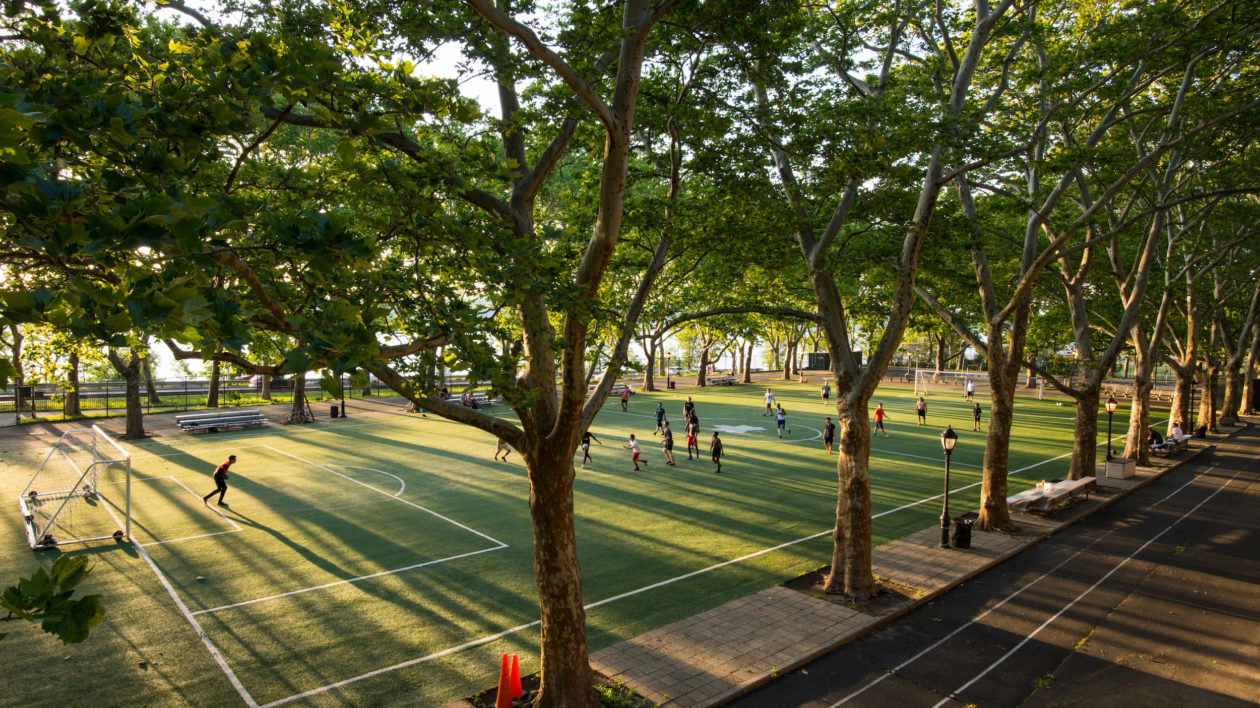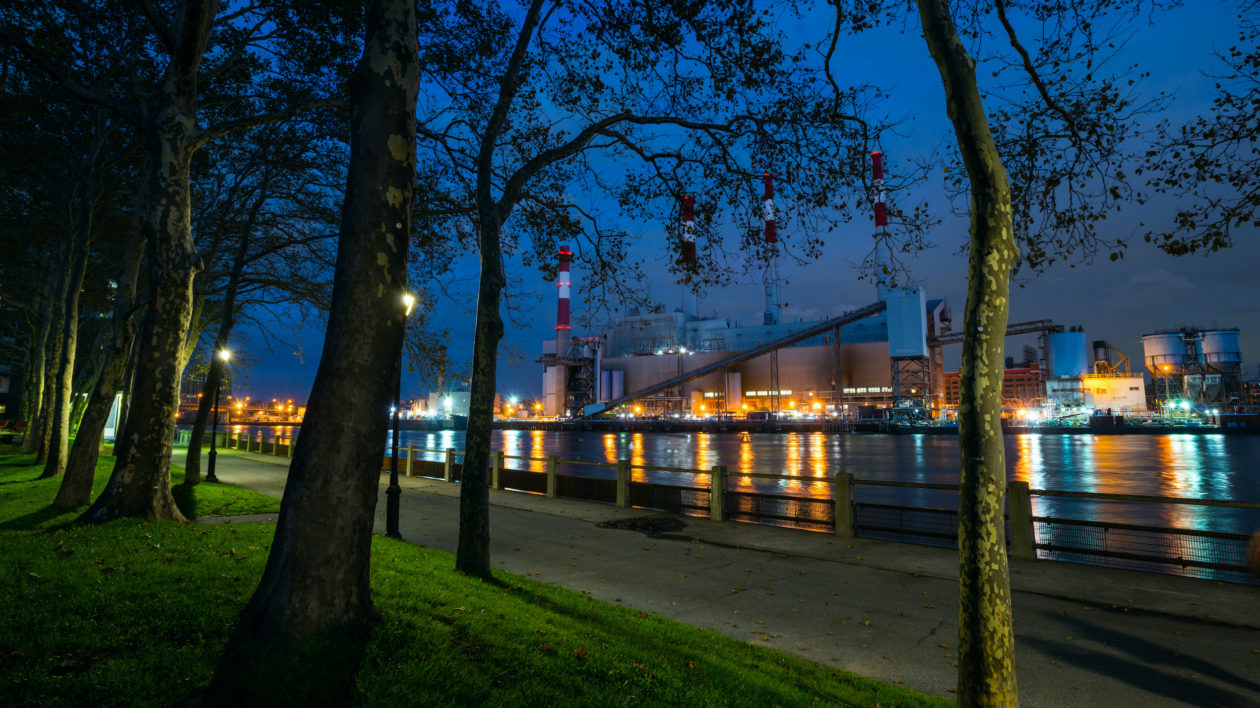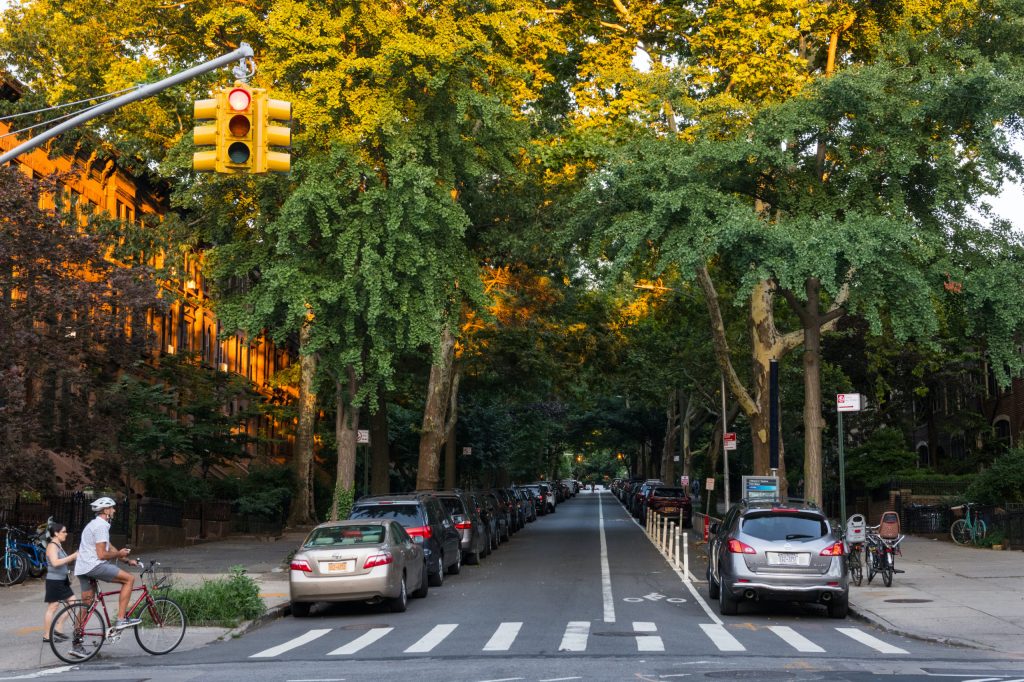Too soon, we move out of pleasant spring weather and into another hot American summer, which odds are will be hotter than the historical normal. Last summer, there was a massive heatwave across much of the west and the southwest of the United States, stretching across 12 states.
Climate change means heatwaves like this are becoming more frequent, with the average number of dangerously hot days likely to triple by 2050. Heatwaves already kill as many as 1,300 people in a typical American summer.
Trees can be one solution to reduce air temperatures. Tree canopy cools the air by shading surfaces like concrete and asphalt, preventing them from heating up in the sun, and by transpiring water as they grow, cooling the air just as the evaporation of sweat cools you off on a hot day.
But scientists know from case studies in particular cities or small sets of cities that tree canopy is very unequally distributed in America, with high-income neighborhoods and neighborhoods with a greater proportion of non-Hispanic whites generally having more tree cover.
We decided to map tree canopy disparities on a national scale, to answer the simple question: How widespread is this trend of tree cover disparity?

A Problem Everywhere
For this study, we wanted to measure the extent of tree cover disparities and its effect on temperatures for a large sample of thousands of communities throughout the United States.
Even a few years ago, this kind of remote sensing and image processing would have been a daunting task, but now we were able to use open-source cloud computing on the Google Earth Engine Platform to map tree cover and summer surface temperatures at a 2m resolution for almost 6,000 communities across the United States. We then overlayed maps of forest cover and summer surface temperatures with US Census data on income, race, and ethnicity.
We found that disparities in tree cover are essentially everywhere.
In 92 percent of US communities, low-income neighborhoods have less tree cover than high-income neighborhoods. High-income neighborhoods have, on average, 15 percent more tree cover and live in neighborhoods that are 3 degrees F cooler than low-income neighborhoods. This trend extends to race as well: In 67 percent of US communities, neighborhoods having a higher proportion of non-white residents have less tree cover than predominately white neighborhoods, even after accounting for trends in income.

Why are there Tree Cover Disparities?
Why American communities have such widespread tree disparity is a complex and multifaceted story that varies somewhat from community to community.
Other scientific studies have shown that tree cover disparities are in part due to the historical patterns of de jure segregation, followed by redlining for decades and the ongoing segregation of cities by income. Our research shows that one key pattern associated with tree cover disparity is the gradient from urban to suburban. In most American cities, high-income, predominately white households moved to the suburbs, where there are larger lots with high tree cover. This has left households in city centers predominately non-white and/or lower income, living on smaller lots that have more pavement and fewer trees.
Regardless of the historical mechanisms leading to tree cover disparities, it is clear from our data that differences in tree cover leads to differences in temperatures near people’s homes.
In a world of altered climate, where heat waves will get more frequent and more intense, differences in tree cover create a disparity in climate risk.
Another research study of mine has estimated that trees in American cities save around 1,200 lives a year during heat waves, a number likely to grow as climate change worsens. However, our new national survey of tree cover disparities suggests that most of these lives saved are in high-income, predominately non-Hispanic white neighborhoods. Trees are already protecting households from climate change, but those households are in neighborhoods that are predominately high-income and predominately non-Hispanic white.
The good news is that tree cover disparities are a solvable problem, if our society dedicates time and resources to expanding tree canopy. We estimate that the US would have to increase the size of our urban forests by 62 million trees across our study cities to bring low-income neighborhoods up to the amount of tree cover in comparable high-income neighborhoods.
We calculate this would cost roughly $18 billion in total in additional planting or maintenance costs, likely spread out over a decade or more of investment.
That is a daunting price tag, but such societal investment to close the urban tree cover disparity between richer and poorer neighborhoods would save hundreds or perhaps thousands of lives annually, as more people lived through heat waves. A more just and climate resilient city is possible if we choose to create a city with nature at its heart.




I have to give a presentation on tree equity (or inequity, as is all too often the case), and the link in the article above to the actual study doesn’t seem to work. Could you please send a link to the actual study so we can use the data and attribute the info to the study itself?
Hi Bonnie–thanks for your note. Sorry about the link problem. I’ve corrected it in the article and you can access the study here: https://journals.plos.org/plosone/article?id=10.1371/journal.pone.0249715
…this would cost roughly $18 billion? Members of the community could plant and maintain trees themselves at zero cost. Throwing money at a problem is seldom a good approach.
I also wanted to point out a few typos:
Mapping Tree Inequality – 2nd image – London plane trees ( line the 101st Street – delete ( & the
A Problem Everywhere – The rich have, on average, about 15 percent more tree cover and live in neighborhoods that are around 3 degrees F ? than the poor
comment – 2. – to understand if and where they would like to see tree (add s)
These are some interesting and important comments. To respond to some of them:
1.) Tree planting has to be done in the right place, with the right tree. There are good guidelines for foresters and arborists that can help choose where to plant urban trees so they thrive. A good place to start might be this link from the Arbor Day Foundation: https://www.arborday.org/trees/righttreeandplace/
2.) Planning where to plant trees needs to be done in conjunction with local communities, to understand if and where they would like to see tree in their neighborhood. This kind of collaborative approach is central to how TNC works in cities.
3.) Tree planting is a very modest part of most municipal budgets, and delivers substantial health and well-being benefits.
4.) To respond to Lisa’s question about the definitions used in the study, high-income was defined as neighborhoods whose average income is in the top 25% of the income distribution in an urbanized area, and low-income was neighborhoods in the bottom 25%.
It’s a beautiful idea to plant more trees in impoverished areas. The practicality is another matter.
We have trees in our urban neighborhood that have been severely deformed due to cuttings by the power company. In the wealthier neighborhoods, the lines are buried and the trees are beautiful.
TNC takes on so many seemingly impossible tasks and succeeds – though it may take time, and I delight in reading about them in “Nature”. Is TNC taking on this project anywhere in the US? Or just anywhere in an urban environment? I was unable to access the “greening of detroit” website in the previous comment. I would gladly contribute to such a project that TNC was running/implementing.
Most of the early cities in the US were established on navigable waterways, often where a river met a larger body of water and had richly fertile soil suitable for farming. Once you tear down irreparable buildings, remove pavement and loosen the soil, trees usually grow well again, as they did before we built the city. IF, that is, some basic requirements are met: drainage, regular watering, protection from damaging humans and animals and replenishment of organic material by recycling leaves & plant debris. Only a few of the pollutants that bother humans damage trees, such as oil and salt or thick coatings of soot.
Programs to organize stakeholders to set up education and upkeep groups run by the residents of the area have the best track records of not only getting grants and planting trees but also protecting and caring for them to keep them alive long term. See, for example, the ‘Greening of Detroit’ organization.
https://www.greeningofdetroit.com/
Would it be possible to know the criteria for “rich” versus “poor”? I don’t doubt the study results, due to the reasons cited, but I’m wondering if any research was done to include middle-class (of any/all races) neighborhoods. Just curious to know if they’d be in the middle of the results, and if it varied by race/location, also. Or maybe that’s a project for another time?!
Either way, I hope that climate change activists will take this seriously, and invest in trees for urban areas. The trees provide so many benefits, for humans and wildlife alike.
Downtown San Francisco, The “Pink Ladies” area and other PRIME areas of some of the MOST EXPENSIVE CITIES in the WORLD don’t have tree cover either. Yes, we can plant trees in underserved areas? Will they grow? Will they have the right growing conditions? You can’t just plop a tree in the middle of a sidewalk in a destroyed, burned out area and expect it to thrive. The community must come together to carefully nurture that tree. Will they? Is the soil nutrient rich enough to support the needs of the root system? Hundreds of years of pollution is in that soil, is it clean enough for the roots? What about water? Is there a water supply? How are the young saplings going to get water? And, lastly, what about protection for the young tree? Even in the “rich” suburbs and “elite” gated communities and “billionaire” row trees are carved on and branches broken off because “we can’t have nice things”. How are you going to protect the young tree? Before we spend Hundreds of Billions on that, how about we spend it on proper housing with proper climate control in the home, with DECENT water, plumbing, food, play areas and schools.